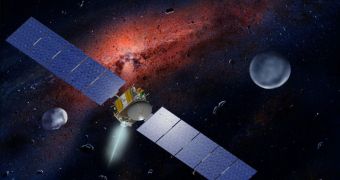For years, experts have circulated a variety of ideas seeking to explain how the first solid materials appeared and developed in the early solar system. Now, a group of experts provides the first solid geological evidence explaining the phenomenon.
Some of the theories experts proposed over time relied heavily on computer models and data obtained from lab experiments, but the new information comes from tangible and reliable sources, experts say.
An international collaboration of researchers, led by scientists from the Imperial College London (ICL), in the United Kingdom, determined that the earliest materials to solidify after the Sun was formed were fragile and porous.
In time, periods of turbulence forced these materials to become more compact and heavier, eventually turning them into the building blocks for planets, moons, asteroids, comets, meteorites and so on.
“Our study makes us even more convinced than before that the early carbonaceous chondrite rocks were shaped by the turbulent nebula through which they traveled billions of years ago,” explains ICL Department of Earth Science and Engineering expert Phil Bland.
The process took place gradually, “in much the same way that pebbles in a river are altered when subjected to high turbulence in the water,” adds the expert, who is also the lead author of a new paper describing the findings.
“Our research suggests that the turbulence caused these early particles to compact and harden over time to form the first tiny rocks,” he explains, quoted by Daily Galaxy.
For the new experiments, investigators analyzed in minute detail samples of space material called carbonaceous chondrite meteorites (CCM). After studying the rocks attentively, they found that the material had originated in the Inner Asteroid Belt (IAB).
The IAB is a collection of space rocks that lies between the orbits of Mars and Jupiter. The large asteroid Vesta and the dwarf planet Ceres can be found within. The NASA Dawn spacecraft is currently en route to visit them both, and it will reach Vesta later this year.
According to the team, the CCM analyzed in the new study was formed in the earliest days of the solar system, as dust particles barely distinguishable with the naked eye started coming together around larger grain particles called chondrule.
“What's exciting about this approach, is that it allows us – for the first time – to quantitatively reconstruct the accretion and impact history of the most primitive solar system materials in great detail,” Bland explains.
“Our work is another step in the process helping us to see how rocky planets and moons that make up parts of our Solar System came into being,” he concludes.

 14 DAY TRIAL //
14 DAY TRIAL //